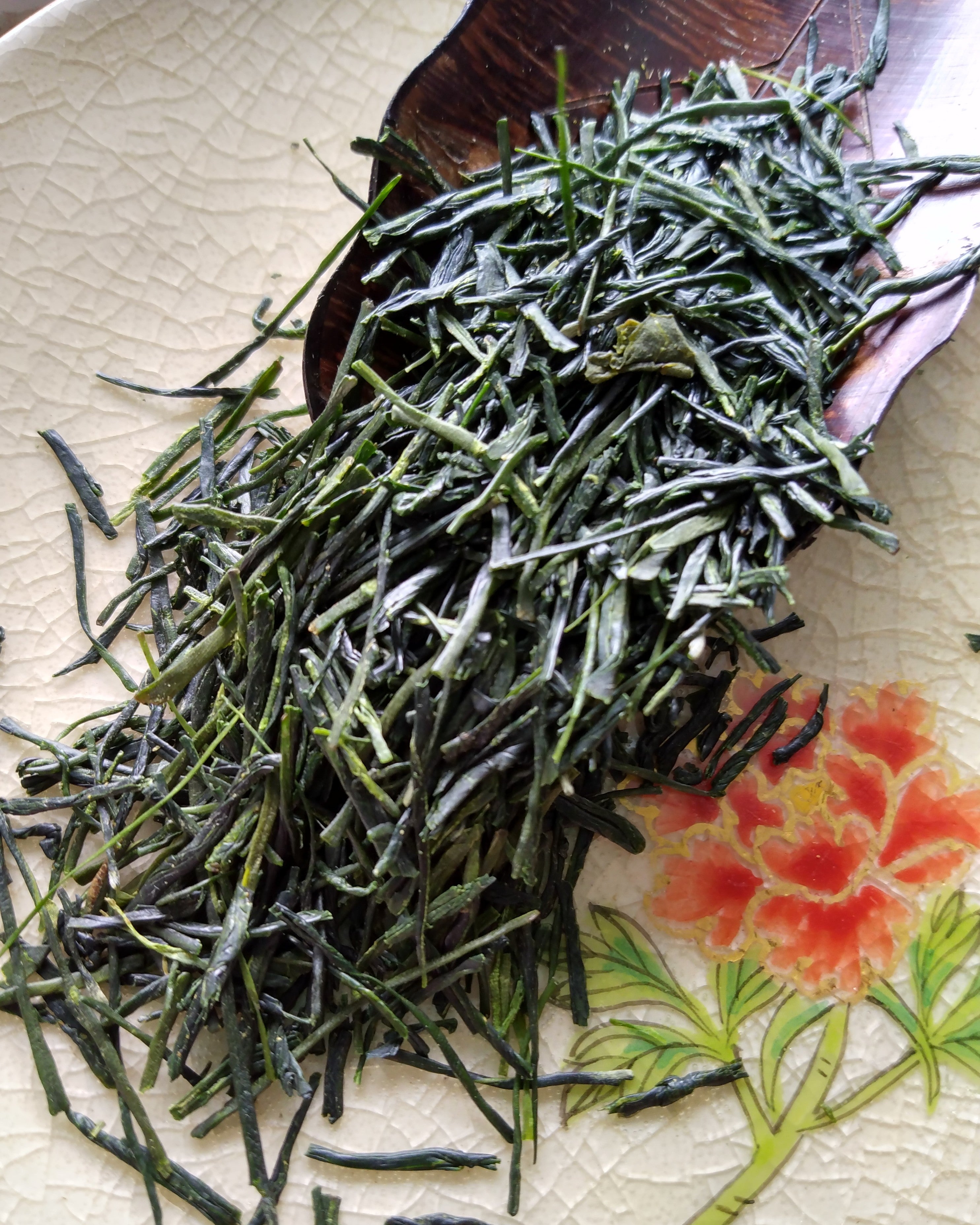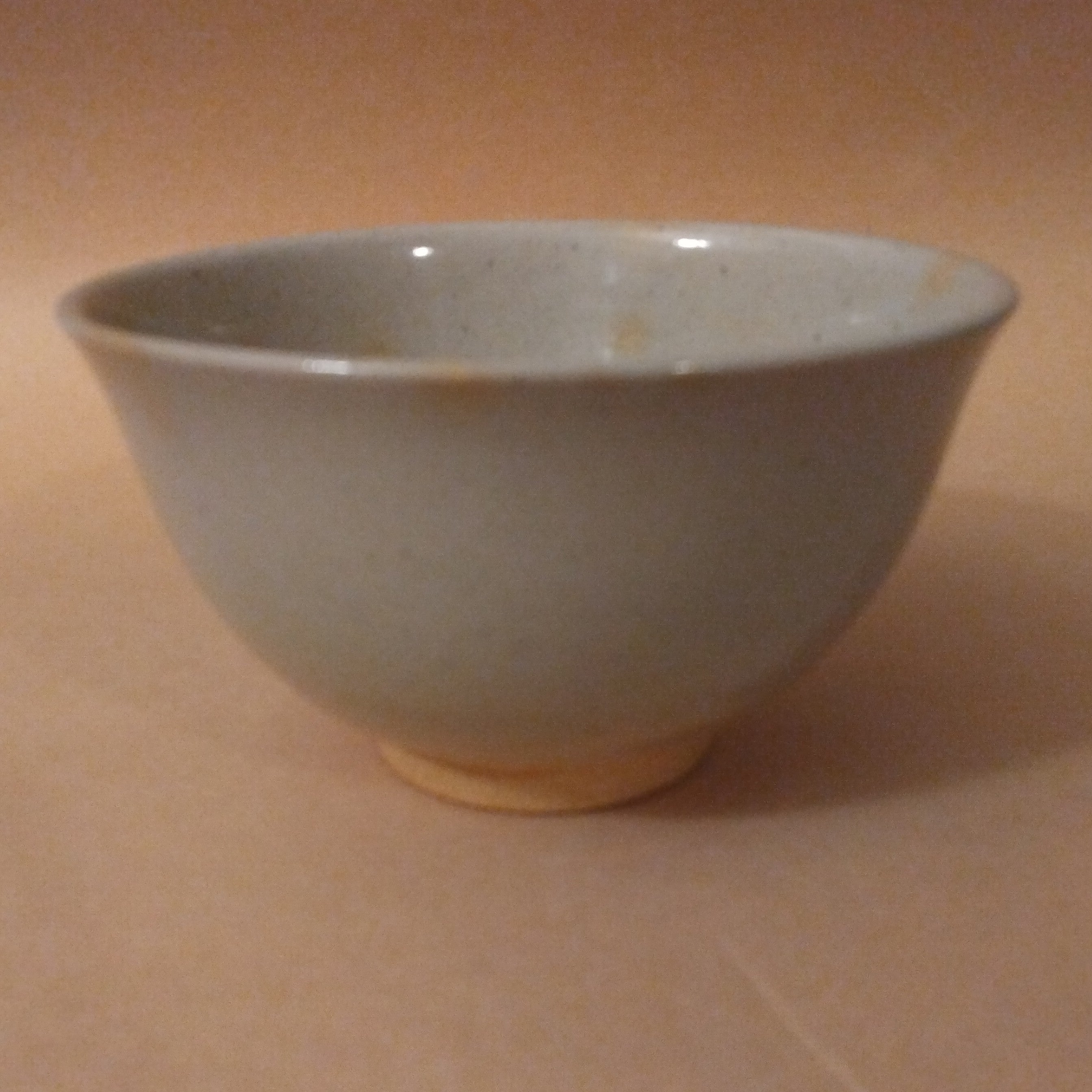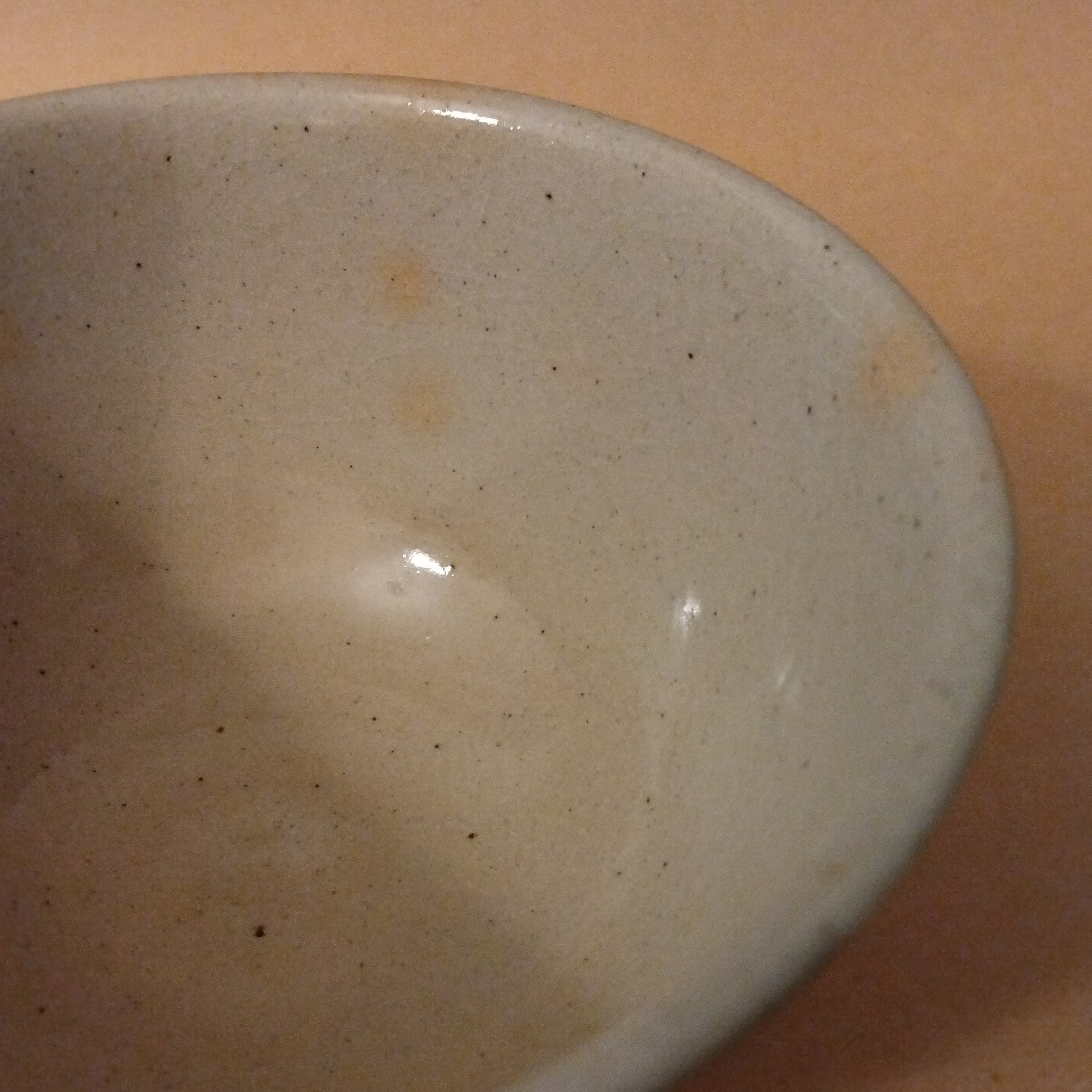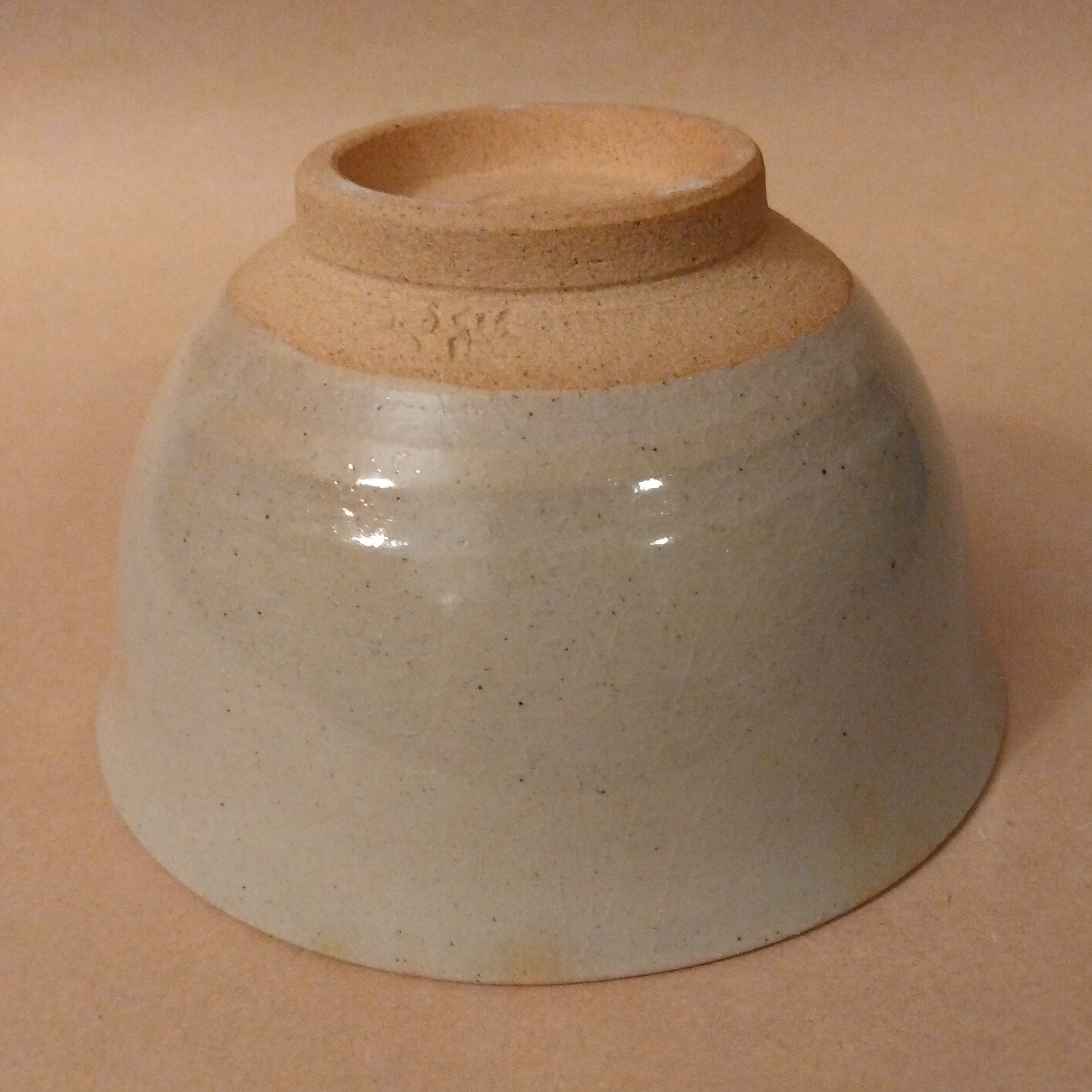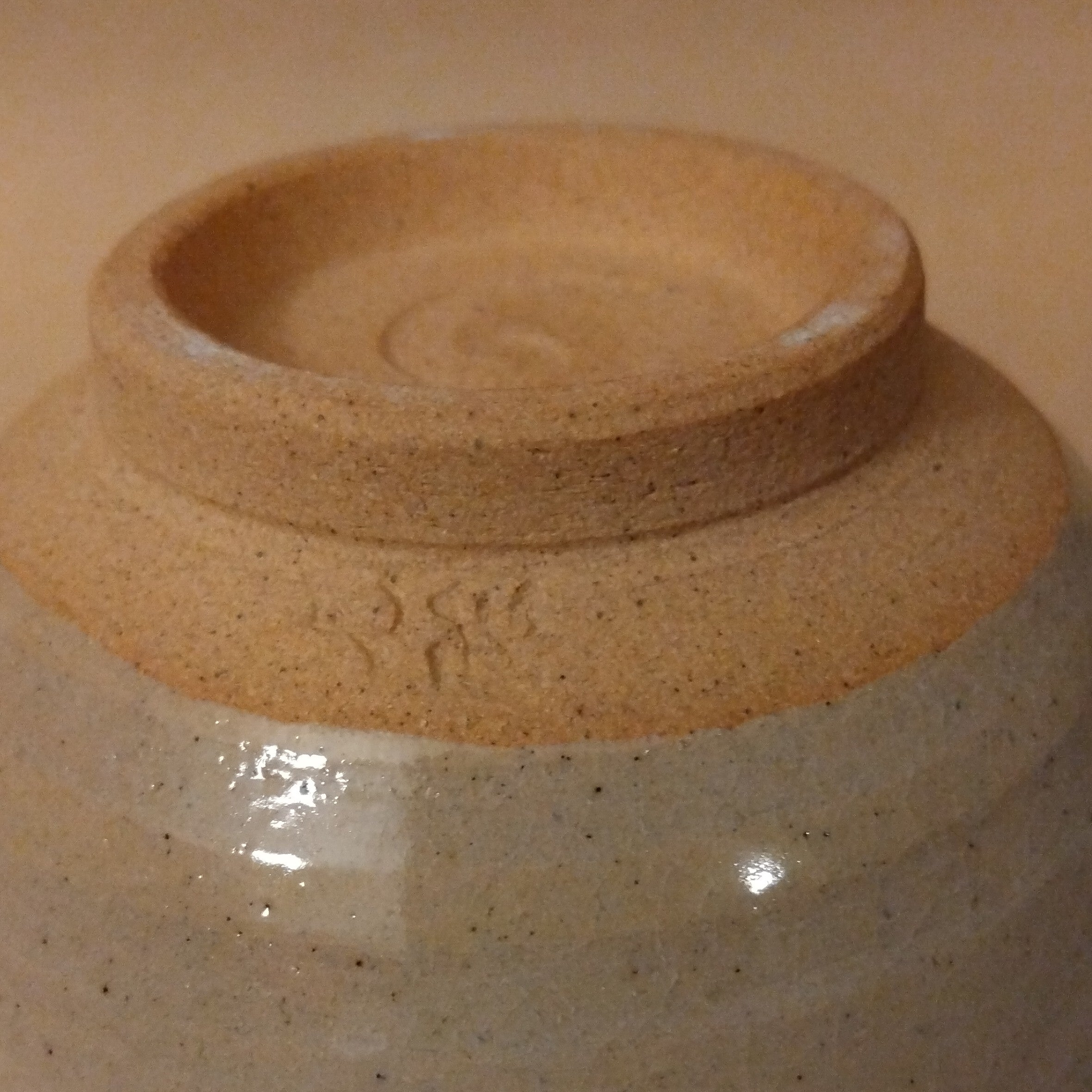Description
Ido-gata (well-shaped) Banko-yaki Kohiki Renshuu Chawan (Practice Tea Bowl,) Banko-ware, with Kohiki Glaze. This type of tea bowl would be considered a Renshuu Chawan (Practice Tea Bowl) for those just starting out in The Way of Tea, or those just wanting an inexpensive everyday tea bowl. The shape is the easiest in which to whisk matcha, and is also suitable for all seasons. Kohiki glaze technique involves a white layer of clay slip over an iron-rich clay body, followed by a clear glaze. It originated in Yi Dynasty (1392-1910) Korea and became very popular among tea connoisseurs in Japan during Azuchi-Momoyama Era (1568-1600). It often features a soft warmth with spots of pink over a creamy white or beige background. It also has the ability to change colors with use over time, a negative to some, but a plus for those tea people who appreciate tea wares developing a life of their own. The foot of this bowl is unglazed, and with artist's stamp (unknown). H. 2.75"(7.cm) x Dia. 5"(12.75cm.) Weight 222 grams.
The history of Banko-waki goes back to the mid-1700's, when a wealthy merchant in nearby (to Yokkaichi) Kuwana named Nunami Rozan established his own kiln in the late 1700's to further pursue his passion and studies in The Way of Tea (Cha no Yu). It's said that Rozan was inspired by, and learned from, the pottery of Kyoto pottery giant Ogata Kenzan. Rozan stamped his works "Banko" or "Banko Fuetsu" meaning everlasting or unchanging. So, unlike many Japanese pottery traditions, Banko ware was not named after the place of production, but by a poetic moniker created by the founder. It wasn't until decades later that Banko ware became a production industry creating wares for a larger domestic audience. In the late Edo Period (mid-1800's) when sencha-type green tea became available to the masses, this greatly contributed to the development of Banko ware and to becoming a center for tea pot production, along with Tokoname. It had gone through ups and downs, along with the national economy, over several generations and in the early 1900's, it even became an export producer with more than half of their production exported to the U.S. However WWII saw the destruction of much of the region through Allied bombings, and over 80% of Banko-ware kilns were lost. The region resumed mass production for domestic consumption after the war, and Banko-yaki training and techniques actually spread to several other parts of Japan. There are now "types" of Banko ware in Akita, Fukushima, Tochigi, Kanagawa, and Gifu Prefectures; respectively named Akita-Banko, Nihonmatsu-Banko, Ashikaga-Banko, Hama-Banko, and Mino-Banko after the cities in which they are centered.
Fortunately, artisan-made pottery for tea use has also once again flourished around Yokkaichi and there are several ateliers of expert potters making fine tea ware.
